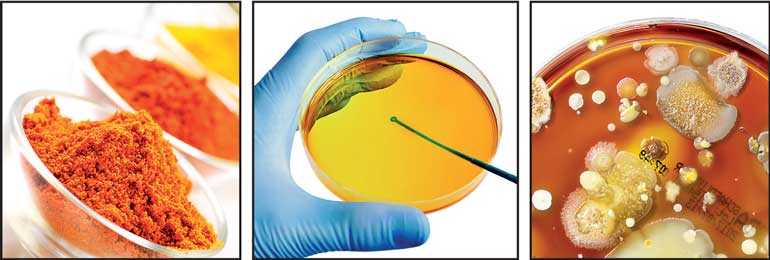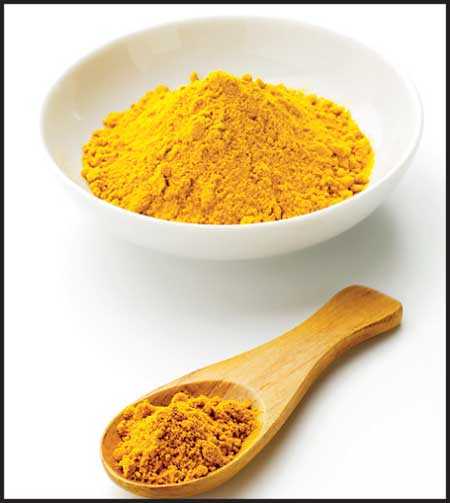Sunday Apr 20, 2025
Sunday Apr 20, 2025
Friday, 2 November 2018 00:00 - - {{hitsCtrl.values.hits}}


There is always something menacing about mould. Not only is it disfiguring, but it can escalate to something that is not good for you.
Mould has a tendency to spread like wildfire, today it’s a few spots on your cheese or bread and tomorrow your whole kitchen will be full of moulding fur.
Some microscopic fungi that we call mould can survive cold, dry or acidic conditions that make bacteria curl up their toes and die. Mould spreads their threads through everything from meat and fruit to bread, vegetables, cheese and jam. And this can happen in sealed containers or even in the fridge. They’re known as the culinary equivalent of dry rot.
That said the correct kind of mould actually enhances the taste of cheeses and wines/grapes. It may add structure to a beautiful wine, it brings depth to certain cheeses. One of the main kinds of mould used in the curing process is the famous powdery white Penicillium camemberti. It’s the mould that gave the world penicillin.
Does this mean we should be more relaxed about mould? Yes and no. Though you may be able to rescue hard cheese from some moulds by cutting out at least an inch around and below the mould spot, but current good advice is that you throw out whiskery hot dogs/sandwiches, cooked meat, grain and pasta, soft cheeses, yoghurt, sour cream, soft fruit and vegetables, bread, baked goods, spices, peanut butter, legumes, nuts and many more items if they have any mould on them.
That said it is incorrect to say that all moulds are safe, some produce toxins and you can’t necessarily tell which are the bad ones just by looking at them. It’s not as clear cut as saying one colour of mould is good and another is bad.
How dangerous can some moulds be? Well ‘Seriously dangerous’. For example the genus Aspergillus, which is commonly found in and grows on improperly stored staple commodities such as chilli, some types of nuts, rice and grains and a variety of other spices produces a group of toxins called Mycotoxins which include ochratoxins and aflatoxins which are toxins that can cause liver disease. Most of these toxins are not destroyed by cooking so are almost impossible to get rid of by conventional means. They are not visible to the naked eye, so it makes it increasingly important to ensure that your food is from a source that has been mindful and tests for toxins and acts to prevent formation of toxins in food. Ensuring that toxins are not formed means following stringent growing, harvesting, storage and processing methods throughout the entire food chain.
In order to avoid microbial spoilage, Ma’s Kitchen puts its spices and products through stringent quality and food safety tests. The company follows strict standards as many of its products are exported around the world and has its own aflatoxin testing facility.
Discover Kapruka, the leading online shopping platform in Sri Lanka, where you can conveniently send Gifts and Flowers to your loved ones for any event including Valentine ’s Day. Explore a wide range of popular Shopping Categories on Kapruka, including Toys, Groceries, Electronics, Birthday Cakes, Fruits, Chocolates, Flower Bouquets, Clothing, Watches, Lingerie, Gift Sets and Jewellery. Also if you’re interested in selling with Kapruka, Partner Central by Kapruka is the best solution to start with. Moreover, through Kapruka Global Shop, you can also enjoy the convenience of purchasing products from renowned platforms like Amazon and eBay and have them delivered to Sri Lanka.
Discover Kapruka, the leading online shopping platform in Sri Lanka, where you can conveniently send Gifts and Flowers to your loved ones for any event including Valentine ’s Day. Explore a wide range of popular Shopping Categories on Kapruka, including Toys, Groceries, Electronics, Birthday Cakes, Fruits, Chocolates, Flower Bouquets, Clothing, Watches, Lingerie, Gift Sets and Jewellery. Also if you’re interested in selling with Kapruka, Partner Central by Kapruka is the best solution to start with. Moreover, through Kapruka Global Shop, you can also enjoy the convenience of purchasing products from renowned platforms like Amazon and eBay and have them delivered to Sri Lanka.